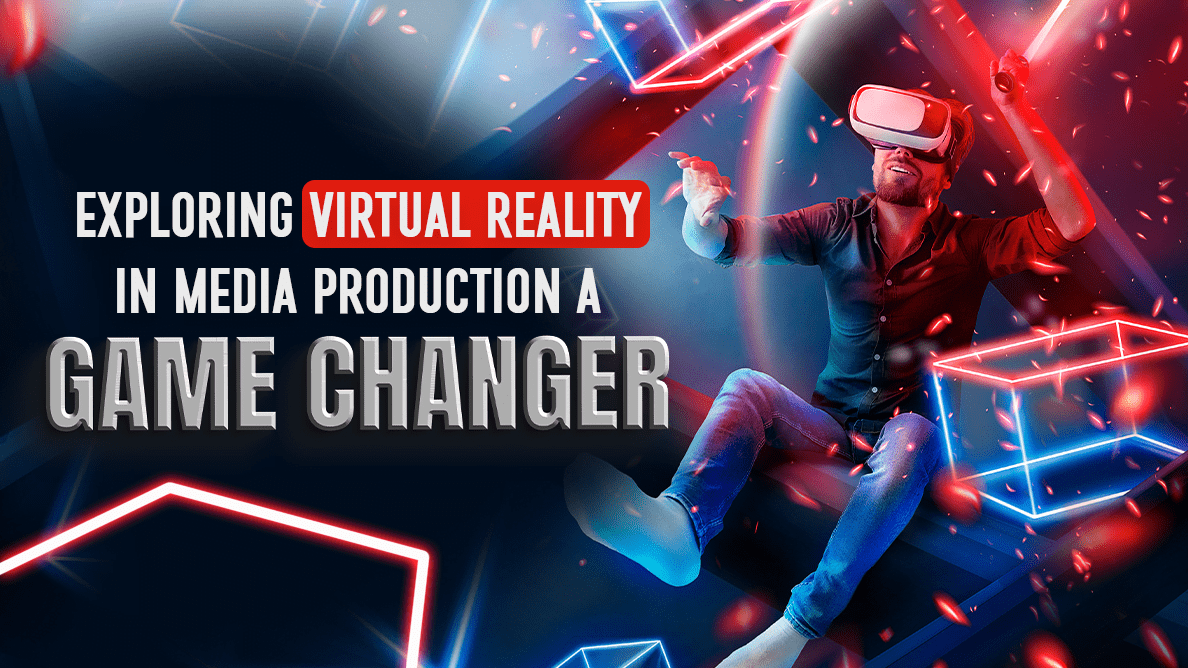Introduction:
In the ever-evolving landscape of media production, one technology has emerged as a transformative force, promising to redefine the way we experience content: Virtual Reality (VR). Once relegated to the realm of science fiction, VR has now become a game-changer in the entertainment industry, offering immersive experiences that blur the lines between reality and digital realms. In this exploration of Virtual Reality in media production, we delve into its origins, the current state of the technology, and its profound impact on storytelling and audience engagement.
The Birth of Virtual Reality:
The roots of Virtual Reality can be traced back to the mid-20th century, with early experiments and theories emerging in the fields of computer science and immersive technology. However, it wasn’t until the late 20th and early 21st centuries that VR truly began to capture the imagination of both creators and audiences.
The advent of powerful computing systems and sophisticated display technologies paved the way for the development of immersive VR experiences. The integration of head-mounted displays and motion-tracking sensors allowed users to step into virtual worlds and interact with digital environments in ways previously thought impossible.
VR in Media Production:
The impact of VR on media production has been revolutionary, transcending traditional storytelling methods and introducing new avenues for creativity. Filmmakers, game developers, and content creators have embraced VR as a powerful tool to engage audiences on a deeper level.
In filmmaking, VR has given rise to a new genre of storytelling. Virtual Reality Cinema allows viewers to be active participants rather than passive observers. Directors can create narratives where the viewer’s gaze influences the unfolding story, offering a level of immersion that traditional cinema cannot match. VR films often rely on spatial audio and 360-degree visuals, providing a sense of presence that transports the audience to the heart of the narrative.
Gaming and Interactive Experiences:
The gaming industry has been at the forefront of adopting VR technology, delivering unparalleled levels of immersion. VR gaming goes beyond traditional screen-based interactions, allowing players to physically engage with the virtual environment. This level of interactivity has redefined gaming experiences, making them more visceral and engaging.
Moreover, VR has expanded beyond traditional gaming to include interactive storytelling experiences. VR narratives can be nonlinear, allowing users to explore branching storylines and make choices that impact the outcome. This dynamic form of storytelling empowers users to shape their own experiences, fostering a sense of agency and connection to the narrative.
Training and Simulation:
Beyond entertainment, VR has found practical applications in training and simulation. Industries ranging from healthcare to aviation leverage VR to create realistic training scenarios for professionals. Medical students can perform virtual surgeries, pilots can simulate flights, and emergency responders can train for various situations, all within a controlled and immersive virtual environment.
The use of VR in training not only enhances the learning experience but also provides a safe space for individuals to make mistakes and learn from them without real-world consequences. This has proven to be a valuable asset in fields where hands-on experience is crucial.
Challenges and Opportunities:
While the potential of VR in media production is vast, the technology is not without its challenges. The cost of VR hardware, the need for powerful computing systems, and concerns about motion sickness are hurdles that the industry continues to address. Additionally, creating compelling and high-quality VR content requires a different set of skills and considerations compared to traditional media production.
However, these challenges are accompanied by significant opportunities. As technology advances and becomes more accessible, the barriers to entry for VR content creation are gradually diminishing. The democratization of VR tools empowers a broader range of creators to explore and experiment with this immersive medium, fostering innovation and diverse storytelling.
The Future of VR in Media Production:
Looking ahead, the future of VR in media production appears promising. As hardware becomes more affordable and user-friendly, and as content creators continue to push the boundaries of storytelling, VR is poised to become an integral part of the entertainment landscape.
The advent of augmented reality (AR) and mixed reality (MR) further expands the possibilities, creating seamless blends of virtual and real-world elements. This convergence of technologies opens doors to interactive experiences that integrate digital and physical elements, offering audiences a holistic and immersive journey.
Conclusion:
Virtual Reality has emerged as a game-changer in media production, ushering in a new era of storytelling and audience engagement. From immersive films to interactive gaming experiences and practical training applications, VR has proven its versatility and potential across diverse fields.
As the technology continues to evolve, the creative possibilities expand exponentially. Virtual Reality represents not only a shift in the way we consume content but also a paradigm shift in the art of storytelling itself. The journey into virtual worlds is just beginning, and as creators and audiences alike embrace the possibilities, Virtual Reality is poised to shape the future of media production in ways we are only beginning to imagine.
Elevate your narrative with PromoEdge Media – A film production house dedicated to excellence, innovation, and the art of storytelling. Your story, our expertise – let’s create magic together


